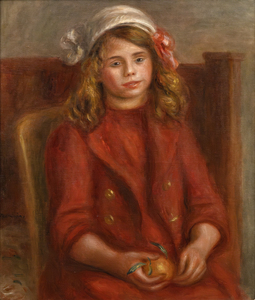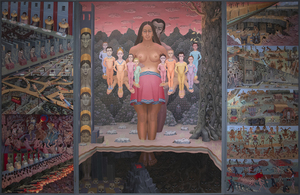مونتيسيتو
توم فينديتي
الرئيس المشارك، استشاري
مونتيسيتو
توم فينديتي هو مستشار محنك يجلب خبرته كمستشار فني مستقل ومدير أول سابق للمجموعات الفنية لبول ألين ، الذي سجلت مجموعته أرقاما قياسية عندما بيعت في كريستيز في عام 2022.
بناء وإدارة العديد من المجموعات ، لعب توم دورا أساسيا في توجيه جامعي الأعمال الفنية البارزين طوال رحلاتهم. قبل عمله كمستشار فني مستقل مقيم في نيويورك ، أمضى توم 14 عاما مع شركة فولكان في سياتل ، واشنطن ، حيث لعب دورا محوريا في تقديم المشورة بشأن عمليات الاستحواذ وإلغاء الانضمام لمجموعة عائلة بول ألين الفنية. يتضح تأثير توم من خلال تخطيطه الاستراتيجي الراسخ ومعاييره الإجرائية لإدارة المجموعات عبر العديد من العقارات. لقد جلب هذه الخبرة إلى عملاء هيذر جيمس منذ عام 2019.
يتألق تفاني توم من خلال عمله الاستشاري لهواة الجمع من القطاع الخاص ومساهمته في المنشآت الفنية العامة ، مما يجسد التزامه بالجوانب المتنوعة لعالم الفن. بصفته رئيسا مشاركا ، يجلب توم ثروة من الخبرة والالتزام بالخدمة ومزيجا فريدا من المهارات التي يتردد صداها مع العملاء الذين يبحثون عن إرشادات لا مثيل لها في سوق الفن.
كاتي ريني باتون
مستشار الفنون الجميلة
مونتيسيتو
تتمتع كاتي ريني باتون بأكثر من 20 عاما من الخبرة المتنوعة في المبيعات الراقية وعلاقات العملاء في مجتمعات الفنون الجميلة والتصميم الداخلي في سان فرانسيسكو ولوس أنجلوس ومانهاتن. عملت مع المعارض الكبرى ودور المزادات وهواة الجمع من القطاع الخاص والشركات ، بما في ذلك Gensler و Chanel و Peter Marino و The Bank of New York.
منذ انضمامها إلى هيذر جيمس للفنون الجميلة في عام 2018 ، قامت كاتي بتأمين الشحنات وساعدت في بناء مجموعات خاصة بارزة مع فنانين بارزين عبر العديد من الأنواع ، بما في ذلك ألفريد سيسلي ، وبابلو بيكاسو ، وجورجيا أوكيفي ، وأنسل آدامز ، وروبرت ماذرويل ، وجورجيو دي شيريكو ، وليونور فيني ، وألكسندر كالدر ، وتريسي أمين ، وتاكاشي موراكامي ، وآندي وارهول.
حصلت كاتي على درجة البكالوريوس في إدارة الأعمال ، وبكالوريوس الفنون الجميلة في التصميم الجرافيكي ، وتخصص فرعي في إدارة الفنون من جامعة ميامي في أكسفورد ، أوهايو. وهي عضو في البطارية ، سان فرانسيسكو.
هيذر جيمس للفنون الجميلة – أصبحت مونتيسيتو موردا قيما للعملاء المحليين، حيث توفر مجموعة واسعة من الدعم والمساعدة لمجموعة واسعة من العقارات. بمساعدة خبراء الفنون الجميلة في هيذر جيمس ، يمكن لممثلينا مساعدتك إذا كانت لديك أسئلة تتعلق بالشراء أو البيع ، أو ترغب في الحصول على كائن من مجموعتك ذات قيمة.
نحن نقدم مجموعة واسعة من الخدمات القائمة على العملاء بما في ذلك تخطيط العقارات والضرائب، وإدارة التحصيلات، والتقييمات، وإدارة الخدمات اللوجستية، والاستحواذات، والخدمات المالية.
في الأخبار
خدمات
تقدم هيذر جيمس فأين أرت مجموعه واسعه من الخدمات المستندة إلى العملاء التي تلبي احتياجاتك الخاصة لجمع الفنون. يضم فريق العمليات لدينا معالجين فنيين محترفين وقسما كاملا للمسجلين وفريقا لوجستيا مع خبره واسعه في مجال النقل الفني والتركيب وأداره المجموعات. مع خدمه القفازات البيضاء والرعاية الشخصية ، فريقنا يذهب الميل الإضافي لضمان خدمات فنيه استثنائيه لعملاءنا.
تعرف علينا
صالات العرض
45188 شارع بورتولا
بالم ديزرت, كاليفورنيا 92260
(760) 346-8926
الساعات: حسب الموعد
172 سنتر ستريت، جناح 101
صندوق البريد 3580
جاكسون هول، WY 83001
(307) 200-6090
الساعات: حسب الموعد


































_tn47012.jpg )

,_new_mexico_tn40147.jpg )



_tn43950.jpg )







